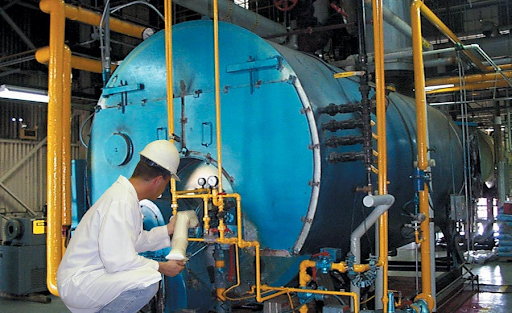Boilers, those unsung heroes of our daily lives, quietly perform the crucial task of heating our homes, powering industries, and even generating electricity. Yet, for many, these complex systems remain shrouded in mystery. We present a comprehensive guide to boiler parts to demystify this vital machinery, offering detailed insights into their functions and significance. Whether you’re a homeowner, an aspiring engineer, or someone keen on understanding heating systems, this guide will provide an in-depth exploration of the intricate world of boiler components.
Essential Boiler Parts
Boilers are complex systems composed of numerous components, each performing a crucial role in the overall operation of the unit. Let’s take a closer look at the essential boiler parts:
Heat Exchanger: Often referred to as the heart of the boiler, the heat exchanger is responsible for transferring heat from the combustion process to the water or steam within the system. It typically consists of a coil or a series of tubes where heat is efficiently exchanged.
Burner: The burner serves as the ignition source for the boiler, responsible for combusting the chosen fuel source, which can be natural gas, oil, or another energy form. The efficiency of the burner directly impacts the boiler’s overall performance and fuel consumption.
Water Pump: In hydronic heating systems, a water pump is essential for circulating water through the heat exchanger and the various heat distribution elements, such as radiators or underfloor heating pipes. Its role is to ensure even heat distribution throughout the system.
Expansion Tank: This component accommodates the expansion and contraction of water as it heats and cools within the system. Maintaining a consistent pressure helps prevent damage to the boiler and associated components.
Pressure Relief Valve: Safety is paramount in any boiler system, and the pressure relief valve is a critical safety feature. It is designed to release excess pressure in the event of a pressure buildup within the system, safeguarding against potential explosions.
Controls and Thermostats: These components are responsible for regulating the boiler’s operation, ensuring that it produces the right amount of heat as required. Modern boilers often feature digital controls that offer precise temperature management, enhancing energy efficiency.
Understanding How Boiler Parts Work Together
To comprehend the intricate dance of boiler parts, it’s essential to grasp how they function in unison. The process begins with the burner igniting the chosen fuel source, producing heat in the combustion chamber. The heat exchanger then absorbs this generated heat, efficiently transferring it to the water or steam within the system. As the hot water or steam forms, a water pump circulates it through a network of pipes to the heat distribution elements, whether radiators, baseboard heaters, or underfloor heating systems. Controls and thermostats diligently monitor and adjust the process to maintain the desired temperature, ensuring that your space remains comfortably heated.
Common Types of Boilers and Their Parts
Boilers come in various shapes and sizes, and the specific components can vary depending on the type of boiler in use. Here’s a brief overview of some common boiler types and the corresponding parts:
Fire-tube Boilers: These boilers feature a cylindrical shell with internal tubes that flow hot gases. The essential components include the heat exchanger, burner, and safety features.
Water-Tube Boilers: In contrast, water-tube boilers have water-filled tubes that facilitate the transfer of heat. They include additional components like a steam drum and more complex systems for water circulation.
Combi Boilers: Combi, or combination boilers, are compact units that provide both heating and hot water. Due to their integrated design, they feature a heat exchanger, burner, and controls but may have fewer components.
Closing Words
Boiler parts, though often hidden from view, are the unsung heroes of efficient heating systems. By appreciating each component’s role in the grand symphony of boiler operation, you can ensure that your heating system continues to provide comfort and warmth while maintaining safety and efficiency standards.
